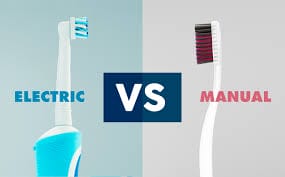Studies have shown that powered toothbrushes are more effective at removing plaque and improving gingival health when compared to manual toothbrushes.
A meta analysis from the International Dentistry Journal (February, 2024) showed participants using an oscillating-rotating brush had an average of 52% fewer bleeding sites when compared with a manual toothbrush and 29% fewer bleeding sites when compared with a sonic brush. When comparing an iO oscillating-rotating brush to a traditional oscillating-rotating brush, there was a 27% reduction in bleeding sites.
When assessing plaque reduction, an oscillating-rotating brush had superior reduction in plaque by 19% when compared to a manual toothbrush and 5% when compared to a sonic brush.
By 12 weeks, there were a higher percentage of oscillating-rotating brush users (76.3%) than manual brush users (29.8%) or sonic brush users (59.2%) transitioned from baseline gingivitis to a state of gingival health. The average time to transition to a state of health was 8 weeks for oscillating-rotating brush users and 12 weeks for sonic brush users.
Oscillating-rotating toothbrushes offer superior results for transition to health, gingivitis, and plaque reduction when compared to manual and sonic brushes.


 Dr. Sakamoto
Dr. Sakamoto
 Dr. Mannava
Dr. Mannava
 Our Team
Our Team
 FIRST VISIT
FIRST VISIT
 PATIENT FORMS
PATIENT FORMS
 DENTAL INSURANCE
DENTAL INSURANCE
 POST-OP INSTRUCTIONS
POST-OP INSTRUCTIONS





